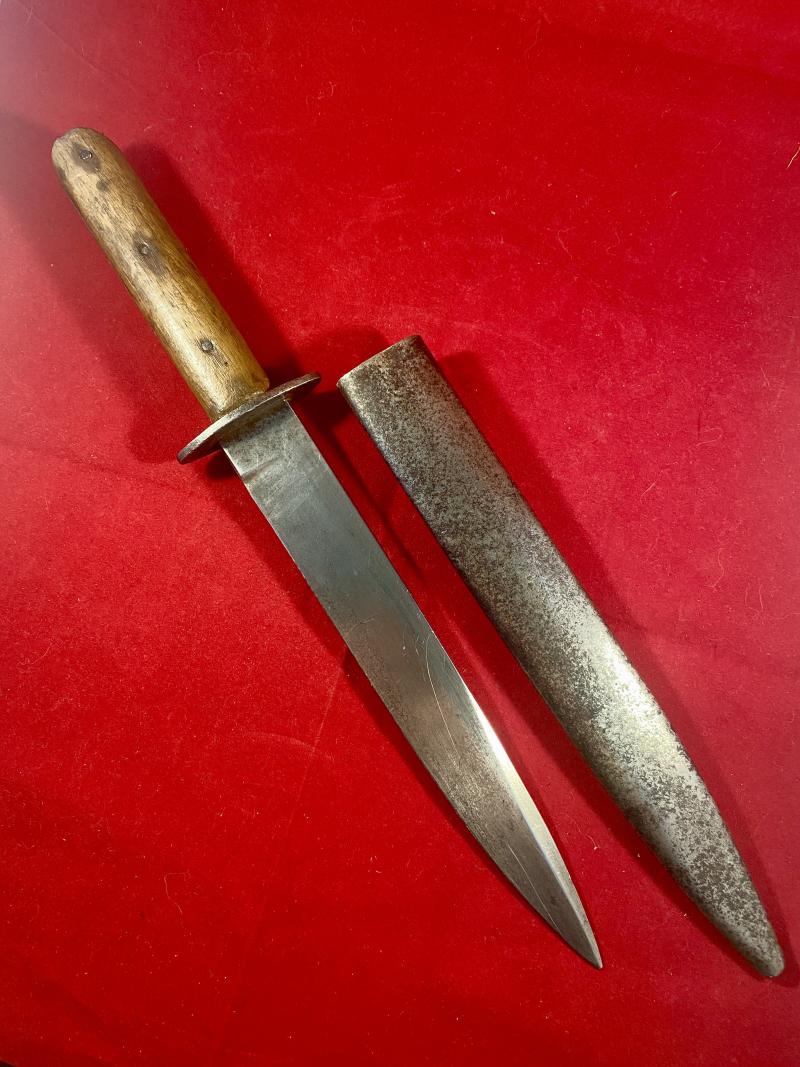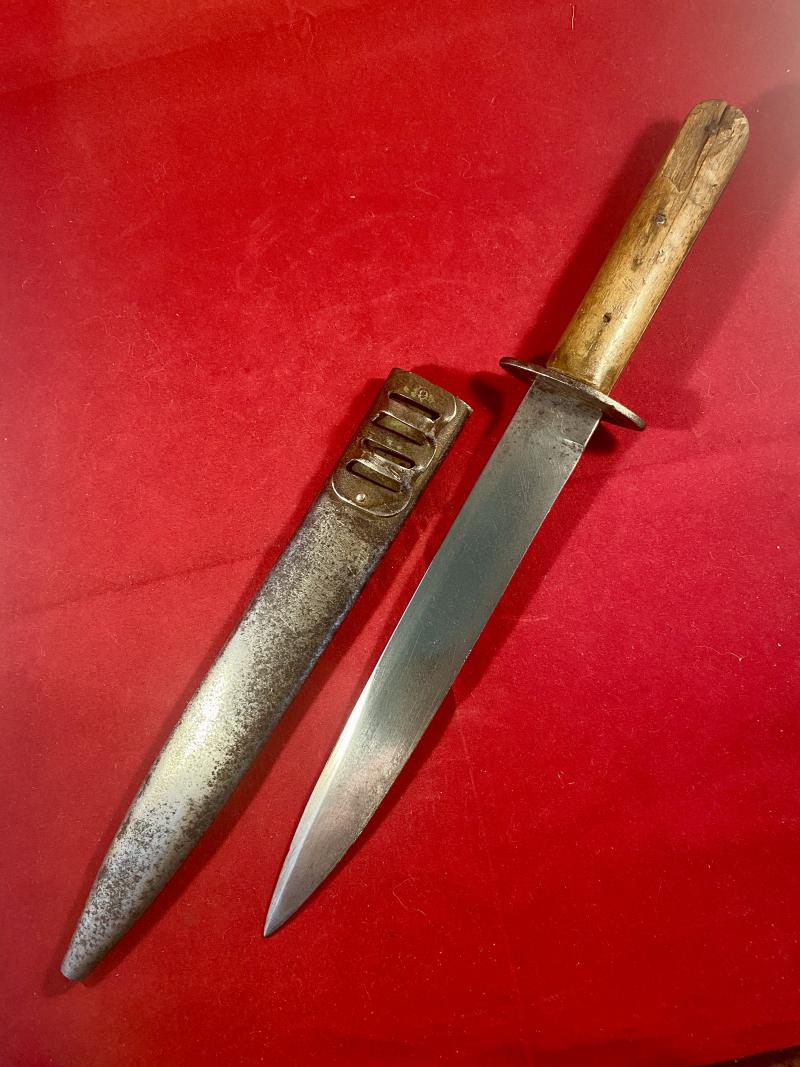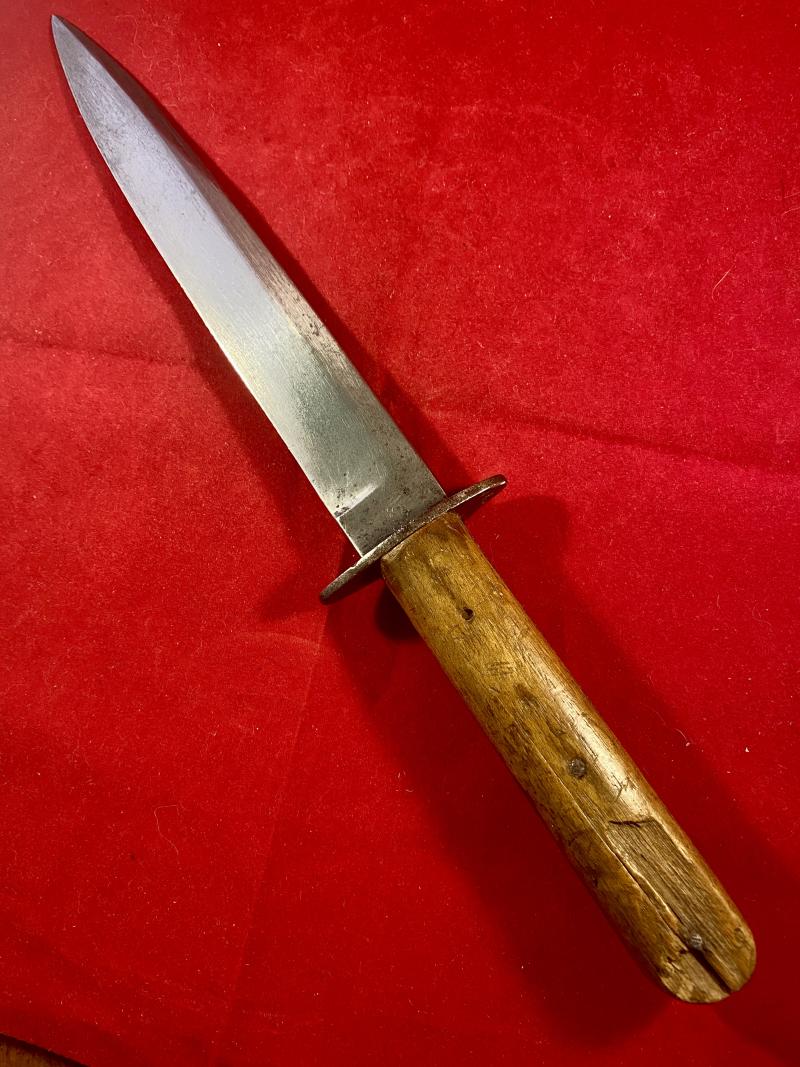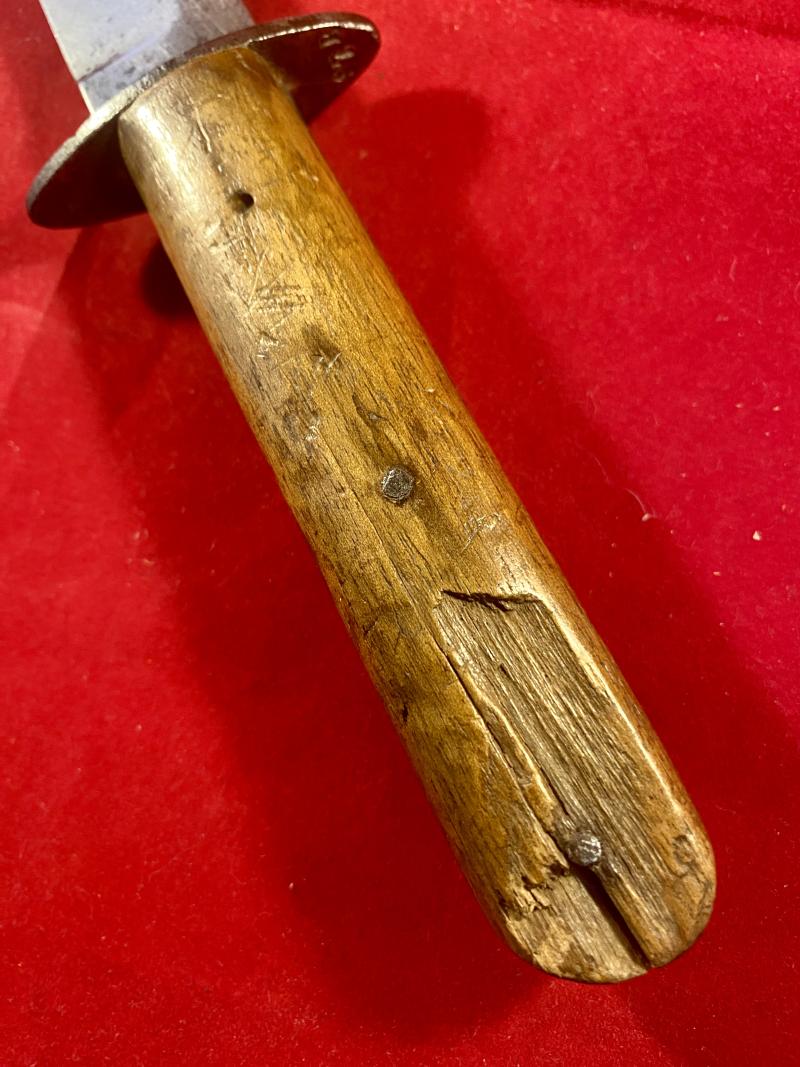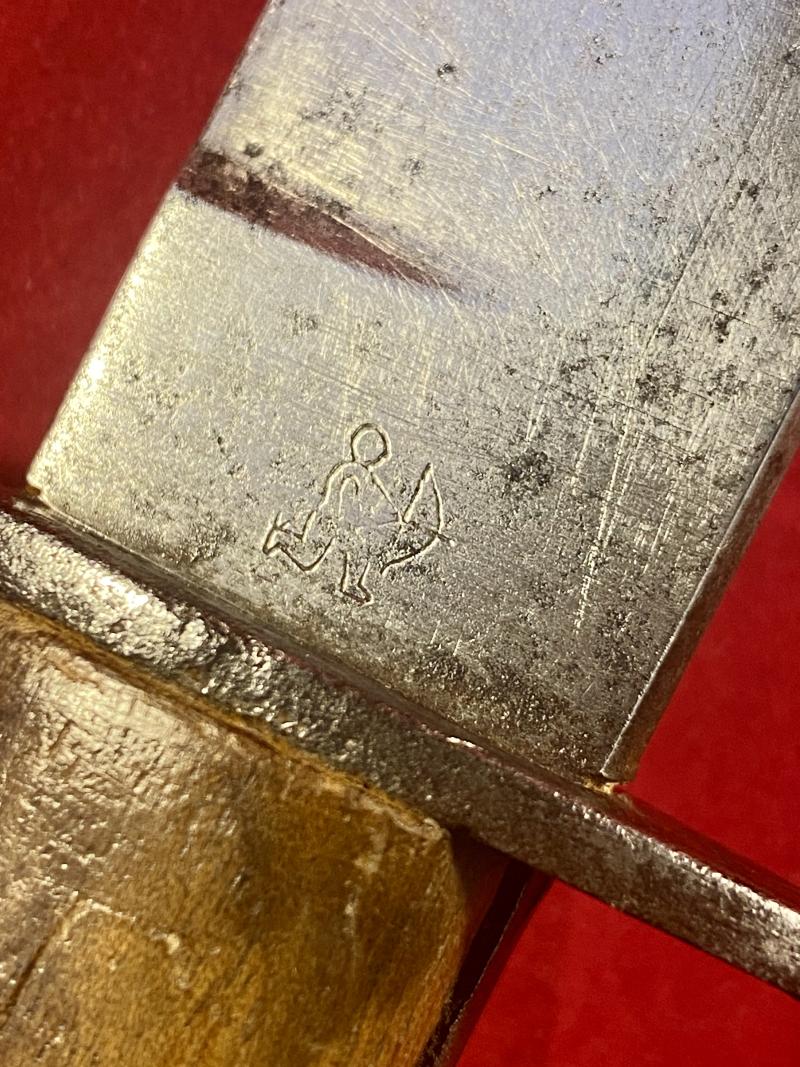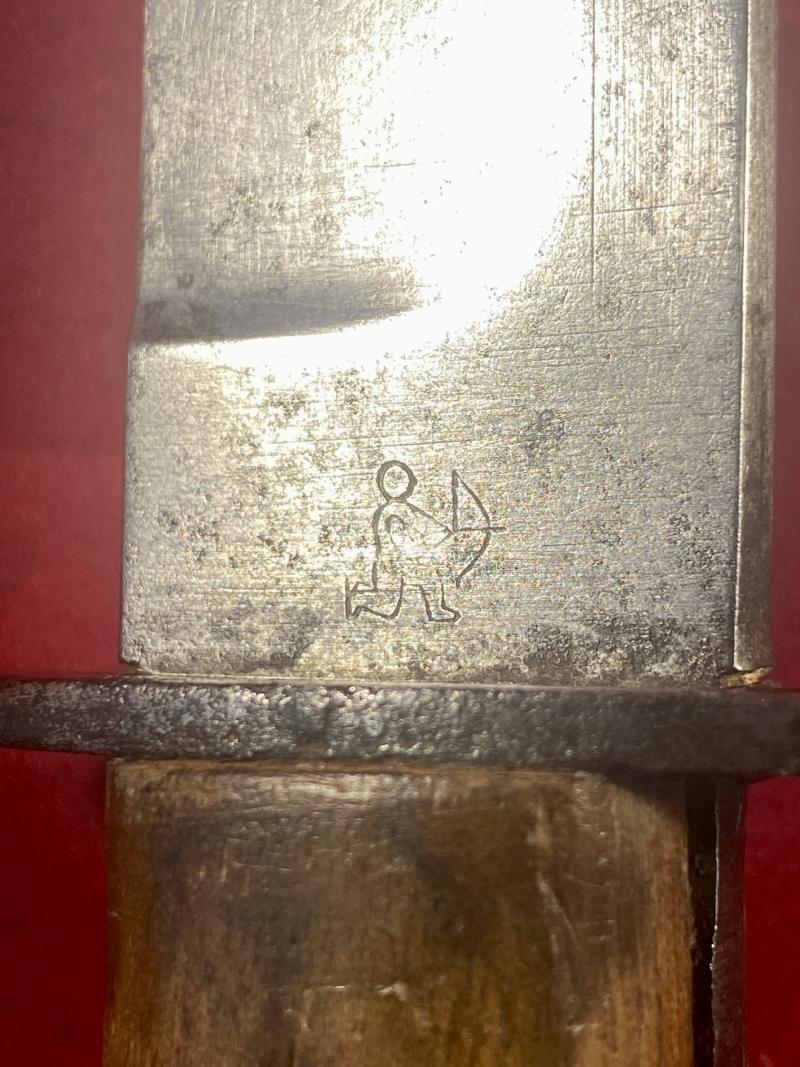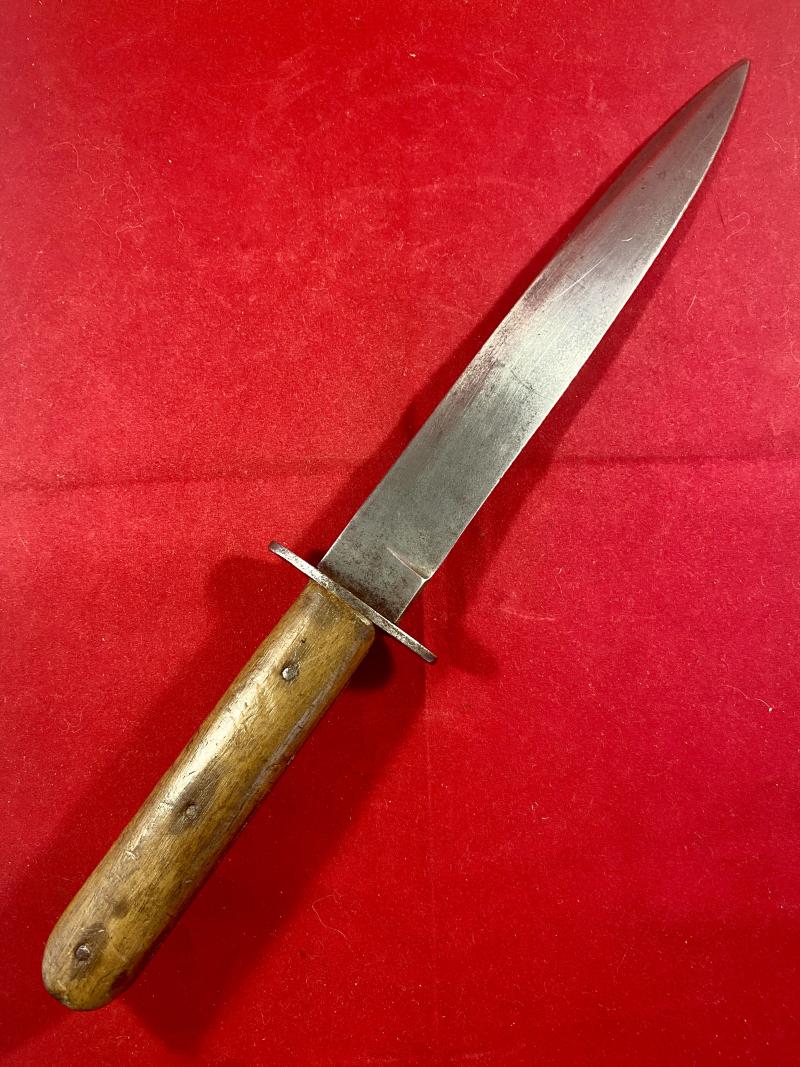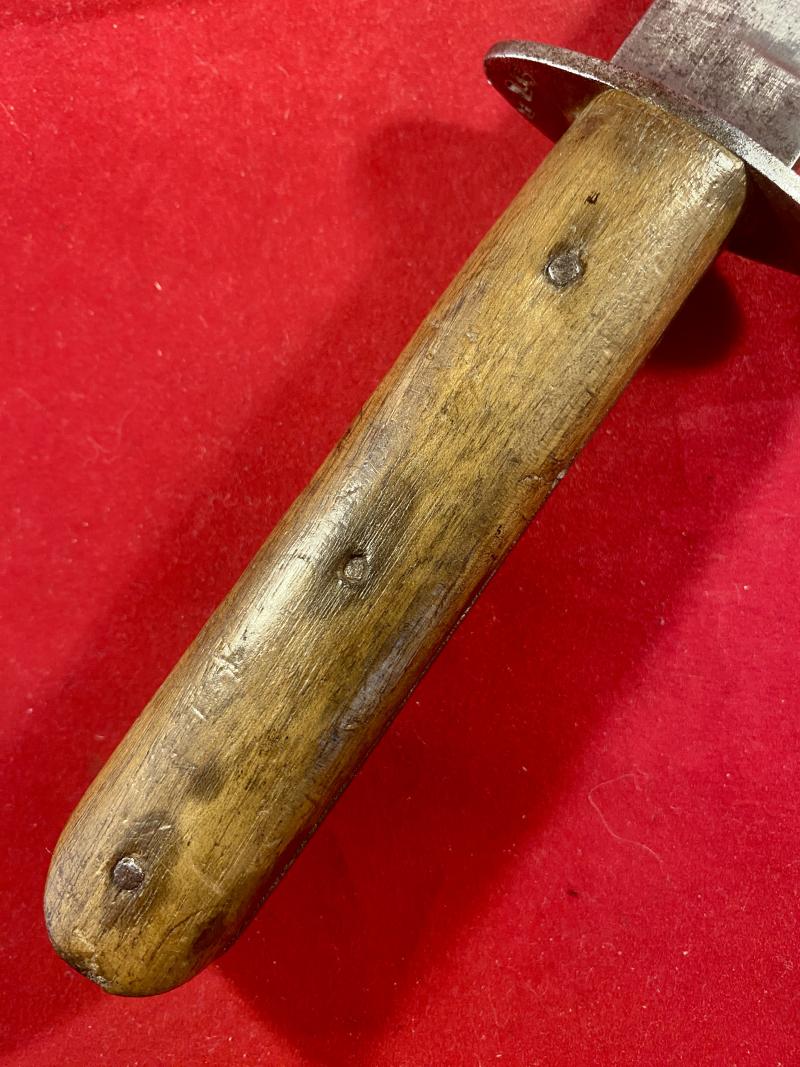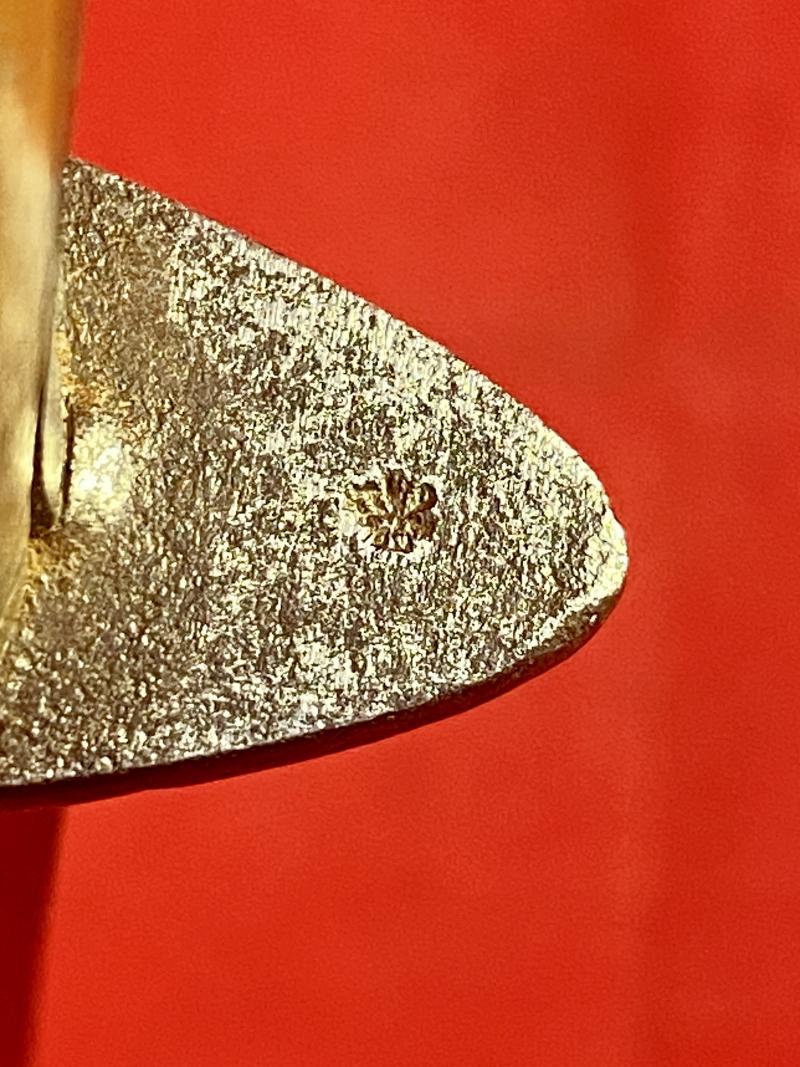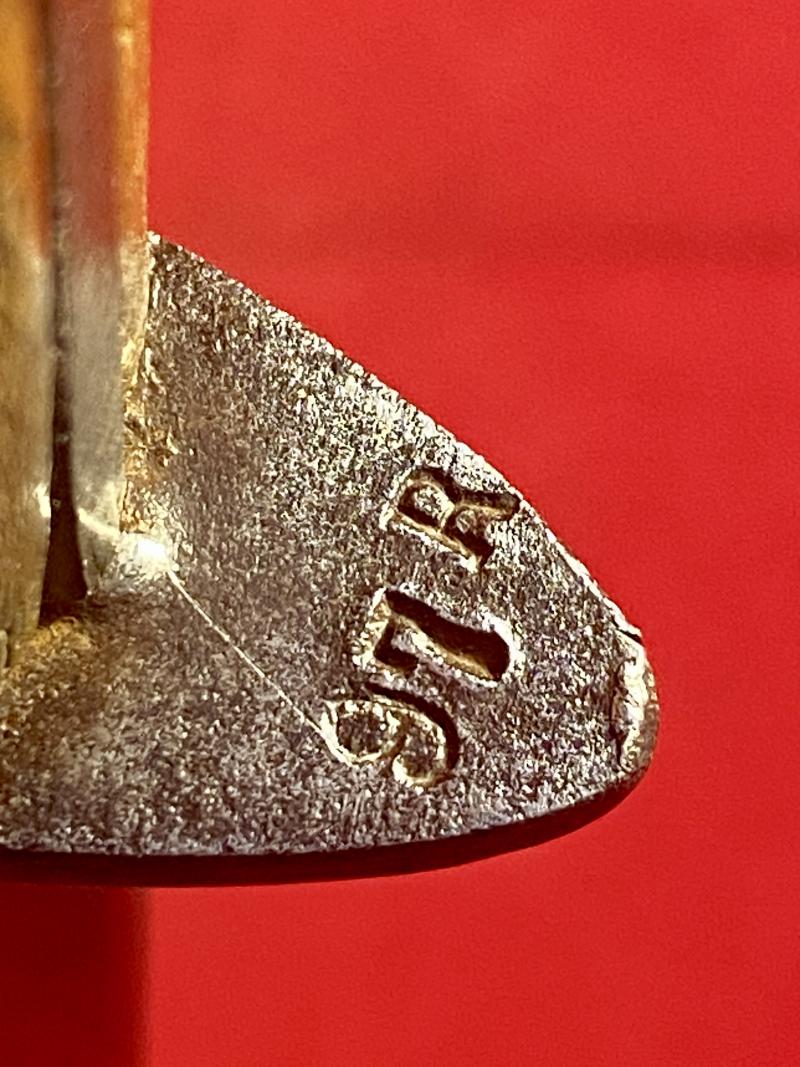Scarce Trench Fighting Knife of the Austro-Hungarian Army M.1917 - Unit Marked for the 97R Infantry Regiment
Here on offer is an original trench fighting knife of the Austro-Hungarian Army M.1917, unit marked for the 97R Infantry Regiment.
This type of knife is also known as the Österreichisch-ungarisches Kampfmesser, Modell 1917.
It has a grip made from two slabs of smooth rounded hardwood, secured to the tang with three steel pins.
The back of the grip has a small section of wood missing at the top but the grip is still held firmly in place and now has a nice patina with some light usage dents and staining.
There is a steel elliptical crossguard, that has an inspection mark stamped on the top one side and on the other, it is stamped with 97R which I believe relates to the Austrian 97R Infantry Regiment.
It is very rare to find such a knife with a unit mark and makes this example a highly collectable piece.
The fighting knife has an un-fullered 8.25” (21cm) tapering blade with spear-shaped point. There is also short 3.5” (8.8cm) false edge in the top of the blade.
It is in excellent condition with just some very slight greying to the finish.
On one side of the ricasso, it is stamped with the image of a kneeling archer, which I believe is the makers mark for Carl Kuhn & Co of Austria.
It comes with its original smooth metal scabbard, which has a metal plate riveted onto one side that has two metal loops rising from it, through which a loop of leather can be attached to act as a belt loop.
The original paint has been lost over time and it now has an overall dark pitting to the metal and a couple of tiny dents.
The blade measures 8.25” (21cm) long and the knife is 13” (33cm) in total length.
It weighs 380g.
The 97th Infantry Regiment “Baron von Waldstätten” (K. u. K. Infanterieregiment Freiherr von Waldstätten Nr.97) was established on 1st January, 1883, from parts of infantry regiments 17th, 22nd and 79th and the 33rd Light Regiment.
All four Battalions of the Regiment left for the Russian battlefields in Galicia in August, 1914, where the Russians completely obliterated them and other Austro-Hungarian units in the fights on 26th and 27th August. After the retreat of the entire Austro-Hungarian Army, the remnants of the regiment gathered and regrouped in Lvov. The regiment spent the winter on the Russian Front and fought at the Dniester River in July 1915, attempting to cross the river in the middle of the month. It was still on the Russian Front in the autumn, but its units were spread through various Austro-Hungarian formations, in the beginning of 1916, the regiment was included in the 215th Infantry Brigade, 30th Infantry Division in the Army reserves of the 7th Austro-Hungarian Army.
Because of its ethnic structure, the 97th Infantry Regiment did not fight on the Italian battlefield with the exception of its 10th Marching Battalion, which was sent to the Soča (Isonzo) Front in May, 1915. It displayed such courage in fighting on the Karst, that it received the honorary title ‘the Isonzo Battalion’.
The whole regiment spent 1916 on the Russian front and fought with the Russian soldiers in various Austro-Hungarian formations. In January it fought near Barancze-Toporoutzu, at the end of May near Juroutz and in the beginning of June in the counterattack of the Austro-Hungarian forces near Dobronoutz on the Dniester. In the beginning of July, its units fought near Kolomea and at the end of July near Dniester.
In August, 1917, the regiment fought at Tereszeny near Seret in Bukovina and in 1918 it was included in the 2nd Cavalry Division of the Eastern Army. It also spent time in the Ukraine. When the Austro-Hungarian Army was dissolved, it was renamed into the 1st Slovenian Regiment, Nanos. In December, 1918, the Trieste/Trst Regiment was formed out of its core in Maribor.
Please see my pictures for the details of the condition that complement this description.
Please see my TERMS OF BUSINESS regarding Deliver Charges and Insurance regarding additional insurance cover, should you require it, BEFORE the item is dispatched.
The responsibility lies with the customer to check with your Customs restrictions that this item can be imported into your country.
Code: 51519
195.00 GBP

